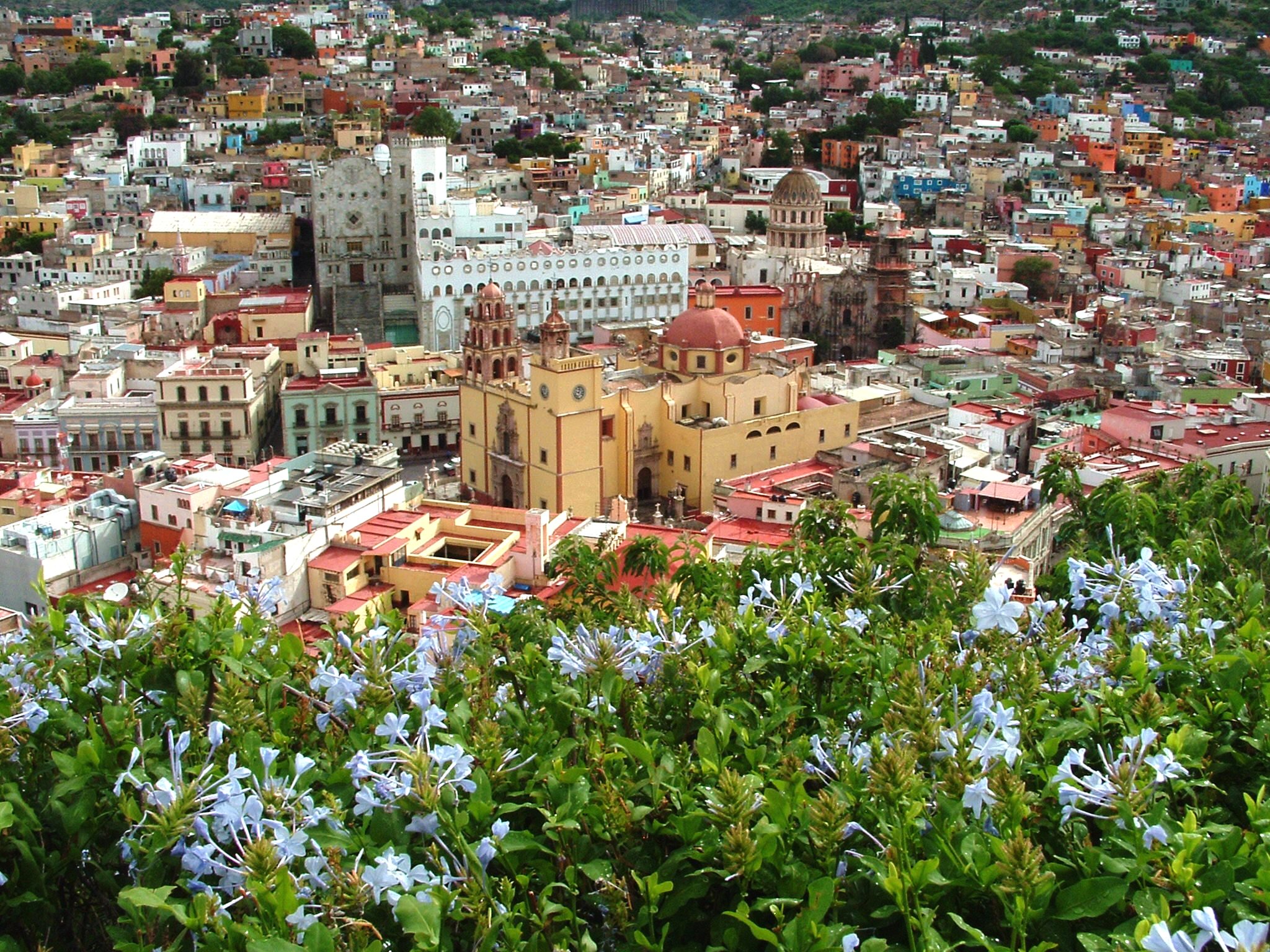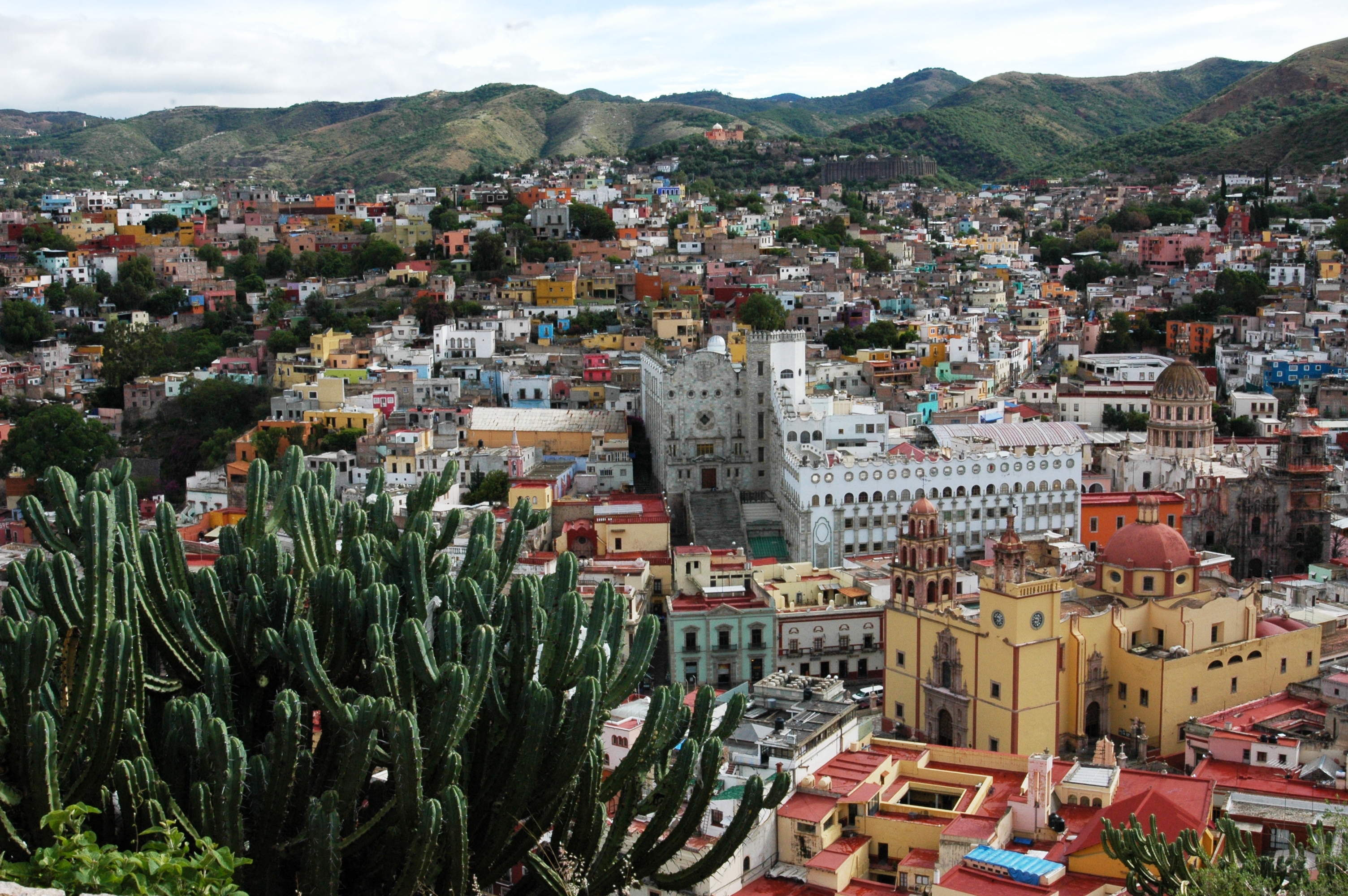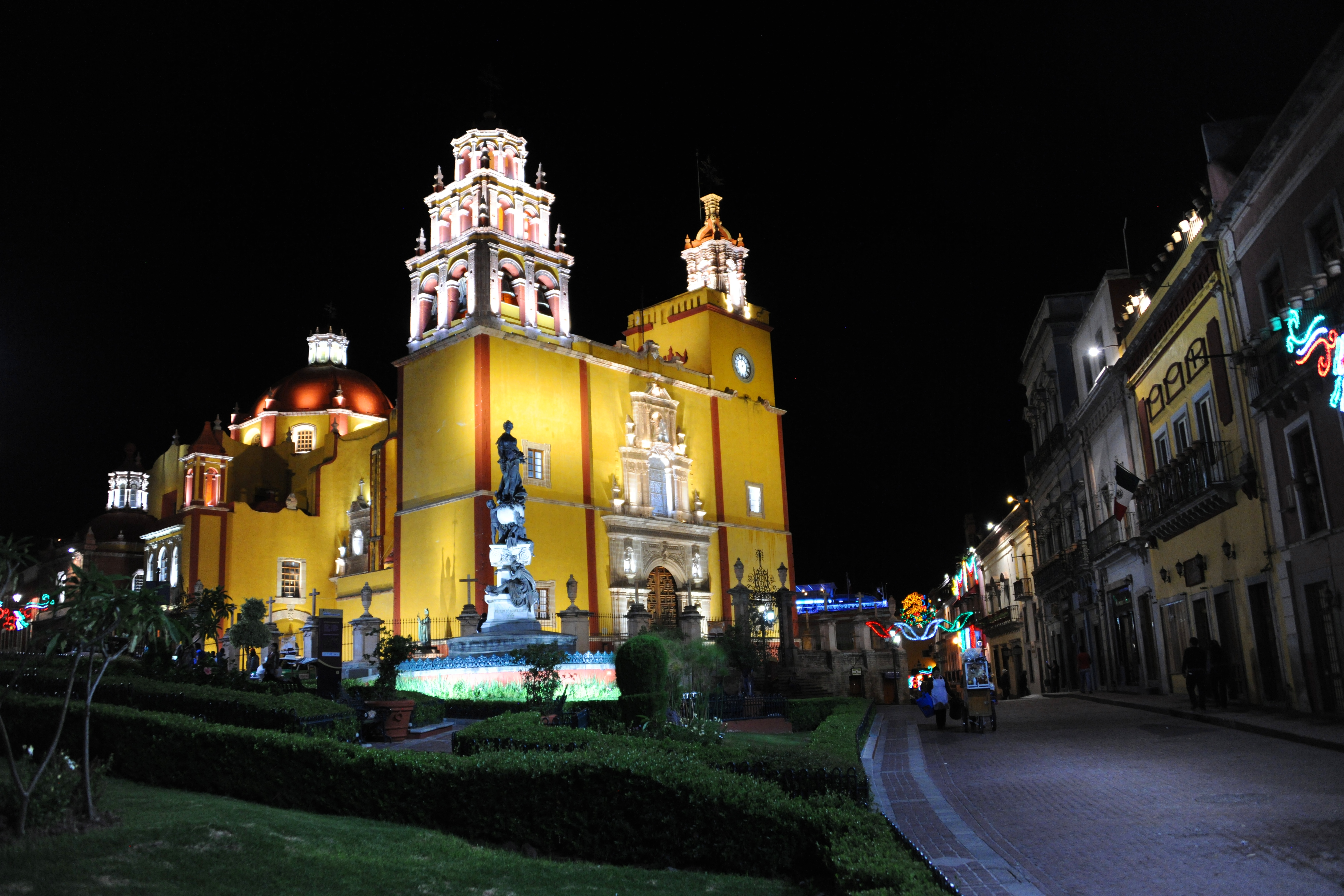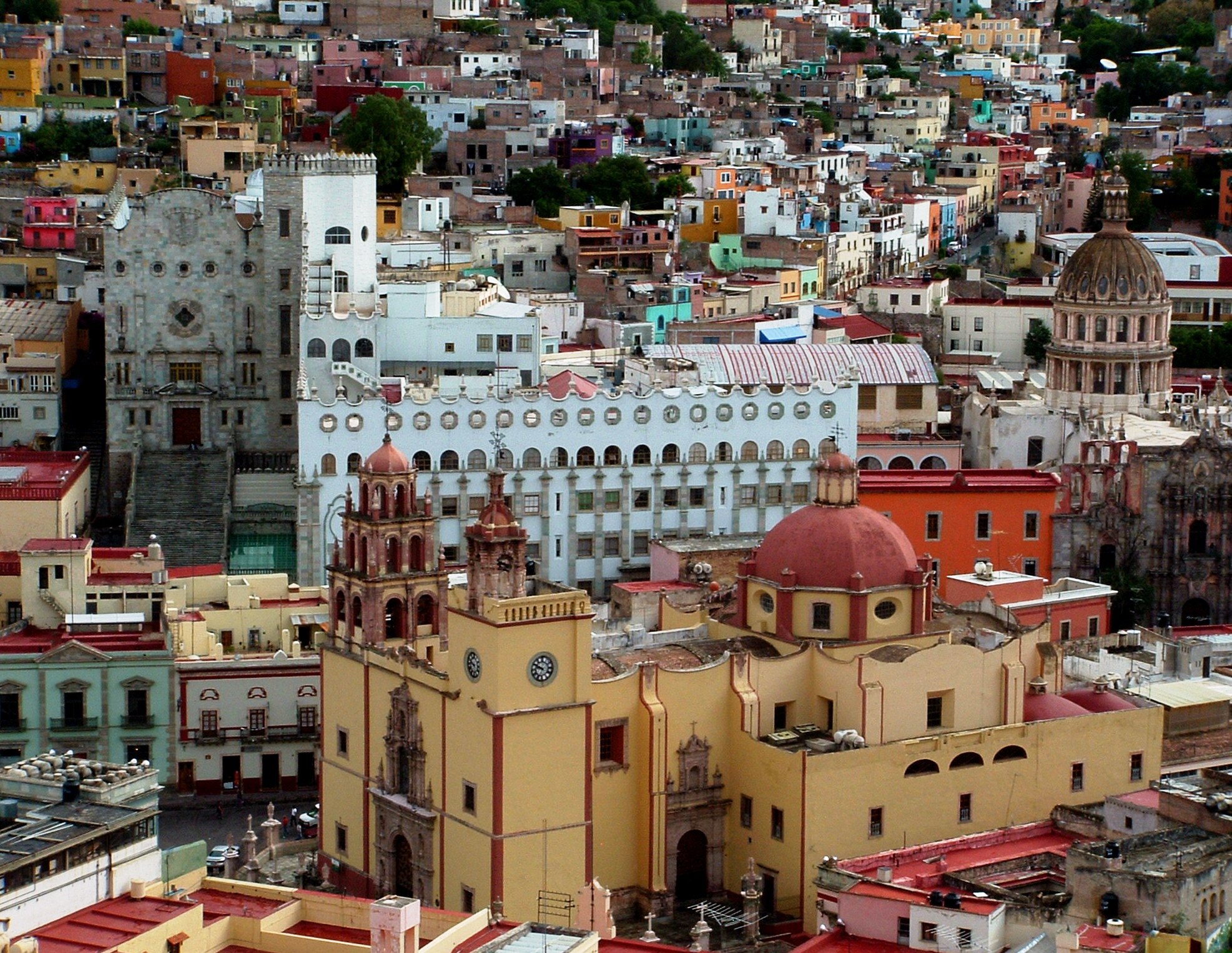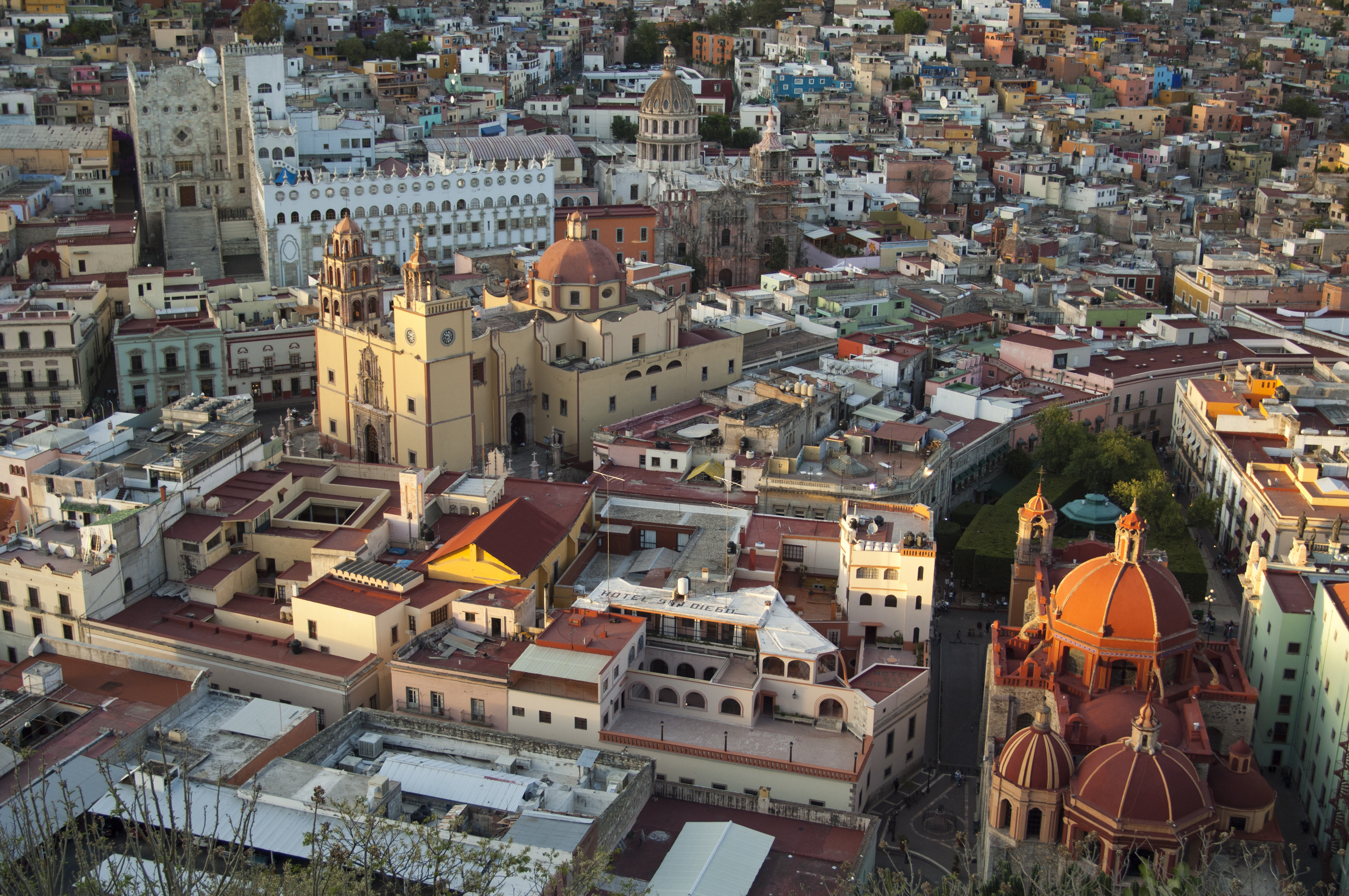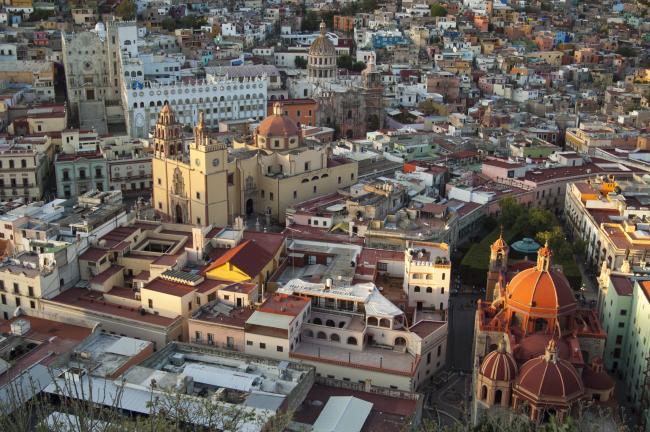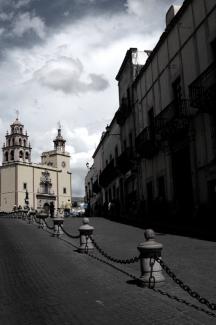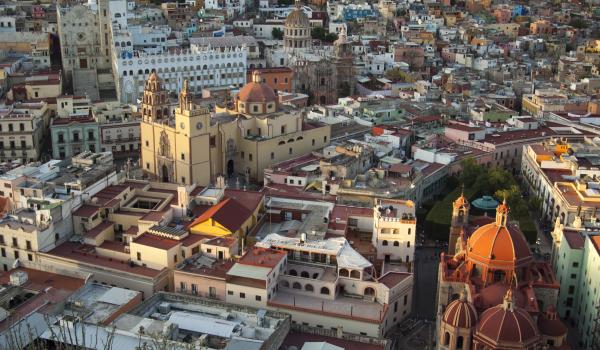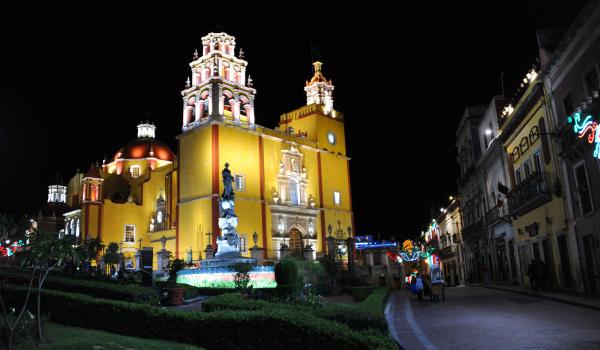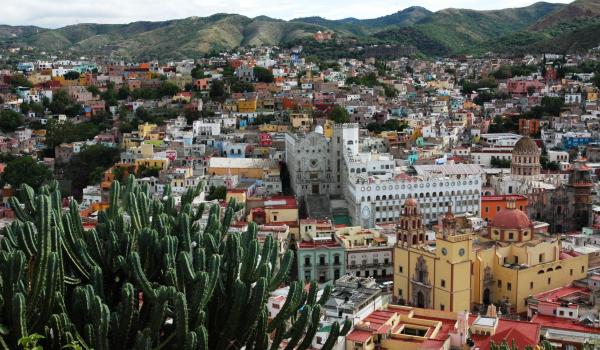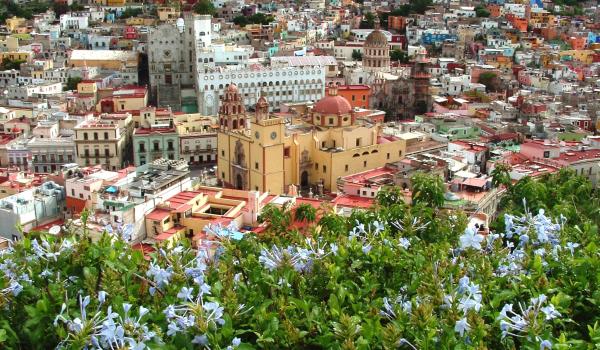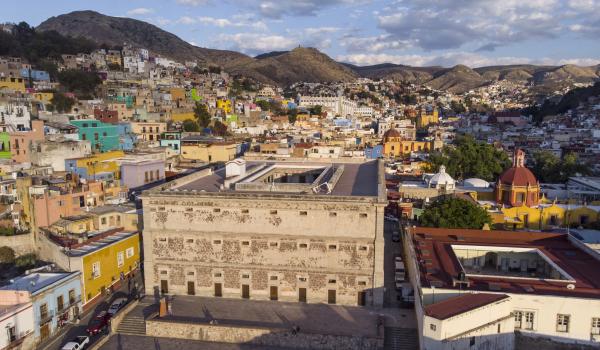Centro histórico de la ciudad de Guanajuato y sus minas adyacentes
Route element
Centro histórico de la ciudad de Guanajuato y sus minas adyacentes
Patrimonio mundial
The city of Guanajuato, whose name derives from the Purépecha expression kuanasïuatu: “hill or mountainous place of frogs,” is located in a canyon surrounded by hills. Although this region was inhabited for many centuries by Chichimeca groups, with the arrival of the Spanish and the discovery of various mines, Guanajuato would become one of the richest cities in New Spain during the 17th and 18th centuries.
The discovery of the first mines in the region began in 1552 with the San Bernabé deposit, and in 1557, the royal mining district was founded beneath the Cerro de La Bufa.
Due to these discoveries, a branch of the Royal Road began to form, leading from the newly discovered mines of Guanajuato to San Miguel. The silver rush was swift, and large migrations to the recently discovered Royal Mining District began.
With the discovery of the veins in the Rayas and Valenciana mines, the city of Guanajuato experienced great prosperity. In a short time, large quantities of ore, especially silver, began to leave Guanajuato, being transported to Mexico City for minting, and from there taken to the port of Veracruz to be shipped to Spain. By the end of the 18th century, the mines of Guanajuato produced 25 percent of the silver in all of New Spain, which allowed the miners of Guanajuato to obtain noble titles.
Starting in 1557, several Spanish settlers established themselves in this region, seeking to benefit from the growing wealth of the Guanajuato mines or setting up agricultural or cattle ranches, where groups of Otomi, Tarascan, and Mexica people worked.
Records of newly discovered mines increased, and along with the construction of defensive fortifications, the Royal Mining District grew irregularly. As the Royal Mining District became populated and its domains expanded, several churches and convents were built, which later led to the construction of civil buildings such as royal houses, granaries, schools, and hospitals.
The Royal Mines of Guanajuato were named a town in 1619 by King Philip III. Later, Philip V designated it a city in 1741 and the capital of the intendancy in 1786. The intendancy encompassed, in addition to Guanajuato, important cities such as Celaya, San Felipe, and San Miguel el Grande. Thanks to the economic prosperity that Guanajuato experienced between the 17th and 18th centuries, many beautiful buildings were constructed, such as the parish church of Our Lady, the churches of San Diego, the Company, San Francisco, and Valenciana, as well as the Granaditas Alhóndiga, where one can appreciate the transition from Baroque to Neoclassical. By 1810, the city had a main square surrounded by beautifully constructed buildings belonging to the wealthiest families in the city. The square housed numerous shops with products brought from various points throughout New Spain. The city had a Royal Treasury, which was one of the wealthiest in New Spain at that time. Moreover, throughout the city, there were a good number of well-built bridges and two nearby dams that supplied water to the inhabitants.
In Guanajuato, the first outbreaks of resistance against the Spanish Crown occurred. The independence movement, the war against the United States, the French intervention, and the political instability that the country experienced in the 19th century resulted in a total decline in all sectors of the mining industry.

